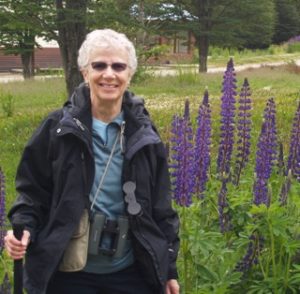Perennials 101
go.ncsu.edu/readext?688538
en Español / em Português
El inglés es el idioma de control de esta página. En la medida en que haya algún conflicto entre la traducción al inglés y la traducción, el inglés prevalece.
Al hacer clic en el enlace de traducción se activa un servicio de traducción gratuito para convertir la página al español. Al igual que con cualquier traducción por Internet, la conversión no es sensible al contexto y puede que no traduzca el texto en su significado original. NC State Extension no garantiza la exactitud del texto traducido. Por favor, tenga en cuenta que algunas aplicaciones y/o servicios pueden no funcionar como se espera cuando se traducen.
Português
Inglês é o idioma de controle desta página. Na medida que haja algum conflito entre o texto original em Inglês e a tradução, o Inglês prevalece.
Ao clicar no link de tradução, um serviço gratuito de tradução será ativado para converter a página para o Português. Como em qualquer tradução pela internet, a conversão não é sensivel ao contexto e pode não ocorrer a tradução para o significado orginal. O serviço de Extensão da Carolina do Norte (NC State Extension) não garante a exatidão do texto traduzido. Por favor, observe que algumas funções ou serviços podem não funcionar como esperado após a tradução.
English
English is the controlling language of this page. To the extent there is any conflict between the English text and the translation, English controls.
Clicking on the translation link activates a free translation service to convert the page to Spanish. As with any Internet translation, the conversion is not context-sensitive and may not translate the text to its original meaning. NC State Extension does not guarantee the accuracy of the translated text. Please note that some applications and/or services may not function as expected when translated.
Collapse ▲By Nita Glickman
Master Gardener℠ volunteer in Chatham County
A beautiful perennial garden depends on site selection. There are several main factors that influence site selection.
Sunlight: Does the site have full sun, partial sun, or shade? How many hours of the day is the site in full sun or partial sun? Most flowering plants require full or partial sun. Only a few will do well in a heavily shaded site.
Water: Perennials need about an inch of water per week in the growing season. More water may be needed in particularly hot weather. When watering apply sufficient moisture to soak the soil deeply. Water when the top 2 or 3 inches of the soil feels dry. To avoid leaf spot, water perennials from below at soil level to limit water on the leaves. If overhead watering is necessary, water early in the day so leaves dry by nightfall.
Slope angle and exposure: Plants on slopes need to be watered more frequently as there will be run-off. North and east facing slopes are cooler that west and south facing slopes.
Temperature: Cool season plants such as dianthus, pansies, and snapdragons do best in early spring and late fall. Heat loving plants do best if they are not in shade.
Soil type: The type of soil (sand, silt, or clay) affects drainage and moisture. Most perennials prefer soil with a pH between 5.5 and 6.5. It is best to conduct a soil test when choosing a site before planting. If plants need a higher pH lime can be added to the soil. Organic matter can be added to amend the soil.
Soil moisture: Most perennials do best in well-drained soil and should not be planted in a site with standing water.
Landscaping with Perennials
Plants look best when grouped together with the tallest plants at the back and shorter plants towards the front. A perennial bed designed for full sun may contain the following plants: elderberry, weigela, milkweed, coral bells, black-eyed susan, aster, cranesbill, and delphinium. A bed designed for shade can contain the following plants: dwarf rhododendron, columbine, Lenten rose, hosta, lady’s mantle and bugleweed.
Maintenance of Perennials
Watering: Most flowering perennials will need supplemental irrigation during the growing season. Watering frequency will depend upon soil type, temperature, and growth stage of the plants.
Fertilizing: It is best to follow fertilizer recommendations provided by the soil test results.
Mulching: A mulched garden requires less weeding and maintains soil moisture. Organic mulches also provide nutrients to the soil. Some examples of organic mulches are bark, grass clipping, leaves, pine straw, shredded hardwood, straw and wood chips.
Weeding: A layer of mulch will help to control weeds. Weeds are easier to pull when the soil is moist after irrigation or rainfall.
Staking: Some tall perennials such as peonies, need to be staked to protect them from wind and heavy rains.
Dead heading and pruning: To maintain growth remove dead or faded flowers and seed pods.
For more information, consult the Herbaceous Ornamentals chapter of the NC Extension Gardener Handbook.





